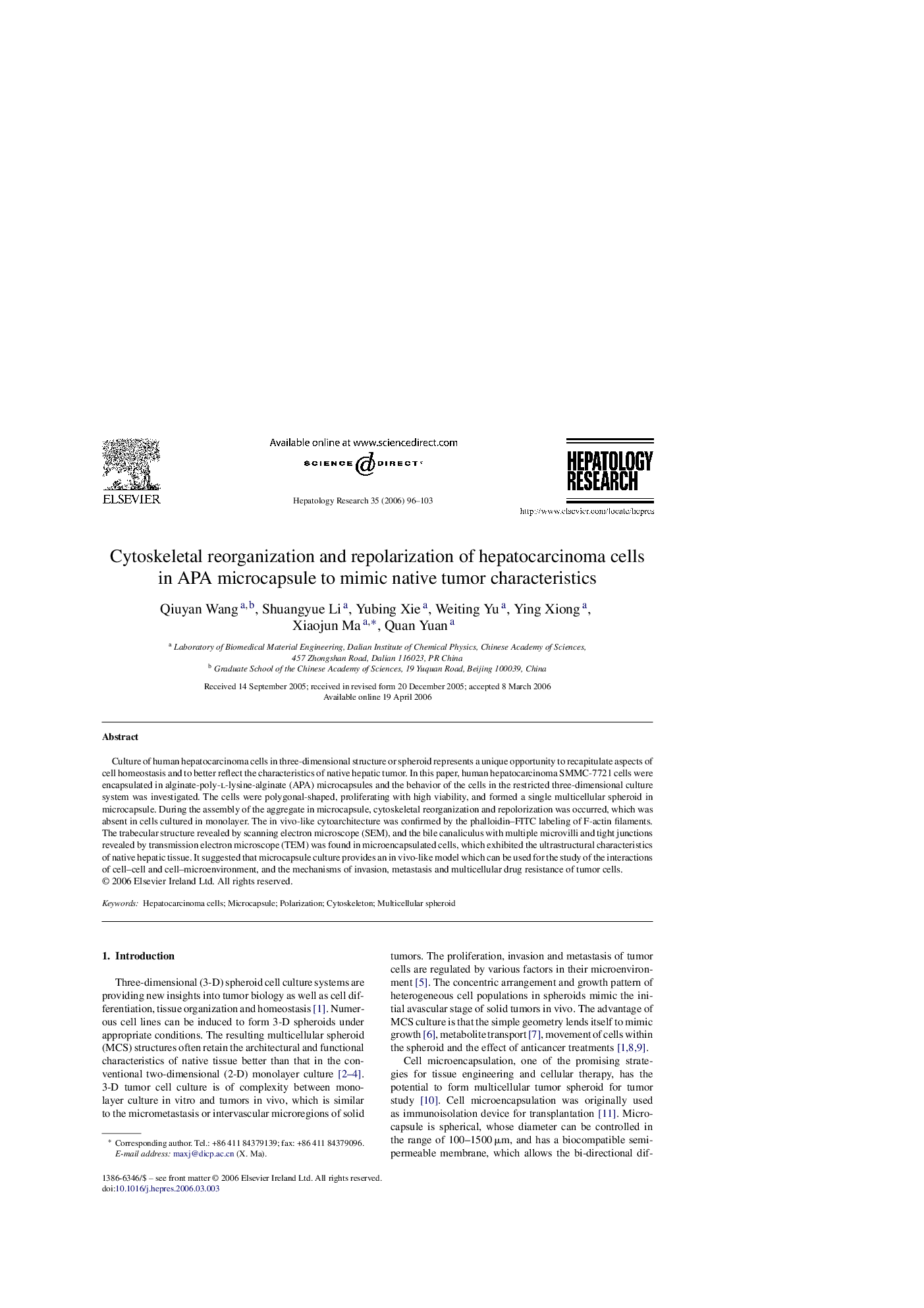| Article ID | Journal | Published Year | Pages | File Type |
|---|---|---|---|---|
| 3311548 | Hepatology Research | 2006 | 8 Pages |
Abstract
Culture of human hepatocarcinoma cells in three-dimensional structure or spheroid represents a unique opportunity to recapitulate aspects of cell homeostasis and to better reflect the characteristics of native hepatic tumor. In this paper, human hepatocarcinoma SMMC-7721 cells were encapsulated in alginate-poly-l-lysine-alginate (APA) microcapsules and the behavior of the cells in the restricted three-dimensional culture system was investigated. The cells were polygonal-shaped, proliferating with high viability, and formed a single multicellular spheroid in microcapsule. During the assembly of the aggregate in microcapsule, cytoskeletal reorganization and repolorization was occurred, which was absent in cells cultured in monolayer. The in vivo-like cytoarchitecture was confirmed by the phalloidin-FITC labeling of F-actin filaments. The trabecular structure revealed by scanning electron microscope (SEM), and the bile canaliculus with multiple microvilli and tight junctions revealed by transmission electron microscope (TEM) was found in microencapsulated cells, which exhibited the ultrastructural characteristics of native hepatic tissue. It suggested that microcapsule culture provides an in vivo-like model which can be used for the study of the interactions of cell-cell and cell-microenvironment, and the mechanisms of invasion, metastasis and multicellular drug resistance of tumor cells.
Related Topics
Health Sciences
Medicine and Dentistry
Gastroenterology
Authors
Qiuyan Wang, Shuangyue Li, Yubing Xie, Weiting Yu, Ying Xiong, Xiaojun Ma, Quan Yuan,
